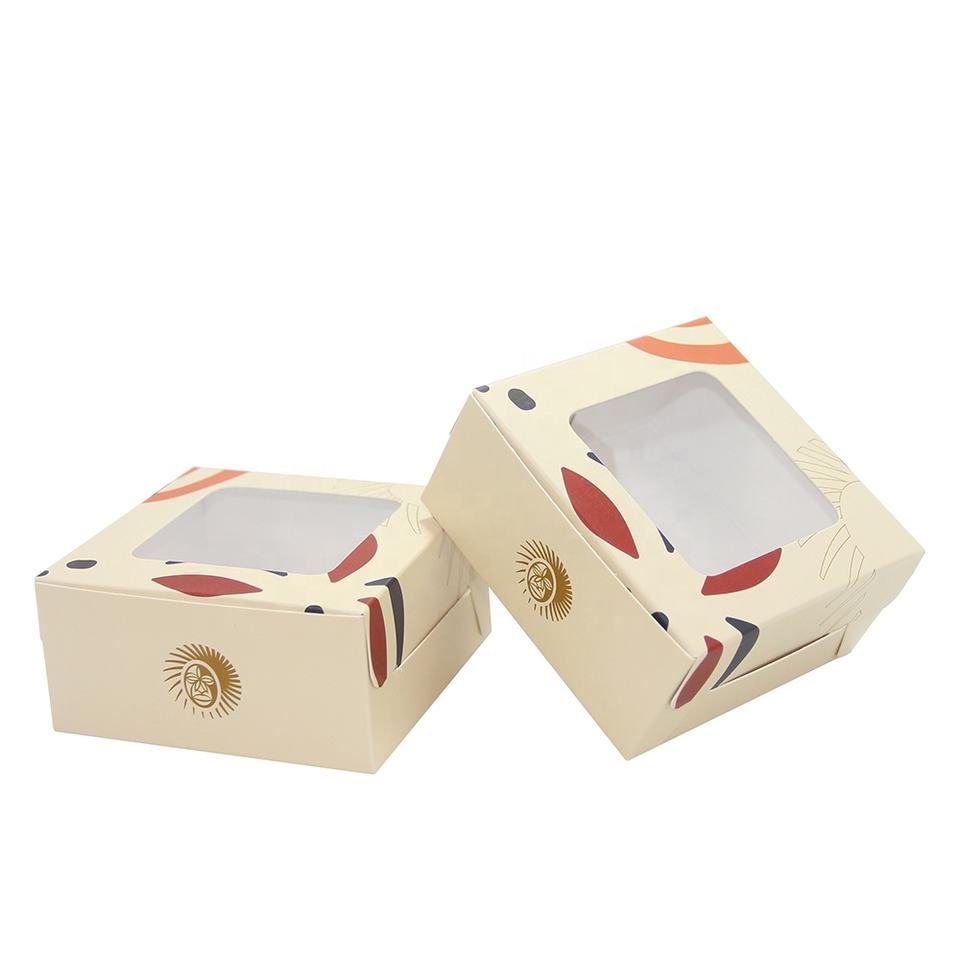Food Grade Packaging Paper Boxes: Essential for Safe and Sustainable Food Packaging
2025-05-12
In the ever-growing food industry, ensuring the safety and quality of food products is paramount. One of the most significant factors that contribute to maintaining food safety is the packaging used. Food-grade packaging materials play an essential role in protecting food from contamination, preserving freshness, and providing convenience for consumers. Among the various types of packaging options available, food-grade packaging paper boxes stand out due to their eco-friendly nature, versatility, and safety standards.

What is Food Grade Packaging Paper?
Food-grade packaging paper refers to paper materials specifically designed to safely contain food products. It is made using high-quality, non-toxic materials that meet stringent safety and hygiene standards to prevent contamination. Unlike regular paper, food-grade packaging paper is treated and manufactured to ensure it does not leach harmful substances into food, ensuring it is safe for direct contact with edible items.
These packaging paper materials are widely used for a variety of food products, ranging from dry snacks and fast food to beverages and perishable goods. The primary reason for using food-grade paper is to create a barrier that protects food from external contaminants while maintaining its freshness, texture, and taste.
Key Features of Food Grade Packaging Paper Boxes
1. Non-Toxic and Safe:
Food-grade packaging paper is free from harmful chemicals and additives that could pose risks to human health. It is designed to be non-toxic and safe for direct contact with food, ensuring that no harmful substances leach into the food.
2. Moisture Resistance:
Many food products, especially those that are fresh or moist, require packaging that can resist moisture to prevent deterioration. Food-grade packaging paper boxes are often treated with special coatings or laminated layers that provide moisture resistance, keeping food products dry and fresh for longer periods.
3. Breathability:
Unlike plastic or metal packaging, food-grade paper boxes often allow for the proper air circulation. This breathability helps prevent the buildup of excess moisture, mold, and condensation, which can cause spoilage. It is particularly useful for products like baked goods, fruits, and vegetables, which require ventilation.
4. Durability and Strength:
Food-grade paper boxes are designed to withstand the rigors of transportation, handling, and stacking. Made from durable materials like kraft paper or corrugated cardboard, they are strong enough to protect food from physical damage during shipping or storage.
5. Eco-Friendly:
As concerns about the environment grow, the demand for sustainable packaging solutions has increased. Food-grade packaging paper boxes are highly regarded for being recyclable and biodegradable. Made from renewable resources, they are an eco-friendly alternative to plastic packaging, helping reduce waste and carbon footprints.
6. Customizable:
Food-grade packaging paper boxes are highly versatile and can be customized in terms of size, shape, and design. Whether it's a takeout box for fast food or a packaging box for luxury chocolates, these boxes can be tailored to meet the specific needs of food manufacturers and brands. Custom printing allows brands to add logos, nutritional information, and attractive designs, enhancing product appeal.
Applications of Food Grade Packaging Paper Boxes
Food-grade paper boxes have a wide range of applications across various sectors of the food industry. Here are some of the common uses:
1. Takeout and Delivery Packaging:
One of the most common uses for food-grade paper boxes is for takeout and delivery packaging. Restaurants and foodservice providers use food-grade paper boxes for packaging burgers, fries, sandwiches, and other fast foods. These boxes ensure that the food remains fresh and protected during transport, while also offering convenience for customers.
2. Baked Goods and Pastry Boxes:
Bakeries and pastry shops use food-grade packaging paper boxes to package cakes, pastries, cookies, and other baked goods. The moisture-resistant properties of these boxes help preserve the texture and flavor of the products, ensuring they remain fresh for longer periods.
3. Gift and Luxury Food Packaging:
Food-grade paper boxes are also popular for luxury food items such as chocolates, gourmet snacks, and premium teas or coffees. Custom-designed food-grade packaging paper boxes are an excellent way to present these products as gifts while also ensuring their protection during storage and transportation.
4. Frozen Food Packaging:
Frozen food items, such as frozen meals, ice creams, and snacks, require packaging that can withstand low temperatures. Food-grade packaging paper boxes are used in these applications, often with an additional protective coating to enhance their performance in cold environments.
5. Fresh Produce Packaging:
Fresh fruits, vegetables, and other perishable items are often packaged in food-grade paper boxes. These boxes help maintain the quality of the produce by offering breathability, preventing moisture buildup, and providing adequate support during transport.
6. Meal Kits and Subscription Boxes:
With the rise of meal kit delivery services, food-grade packaging paper boxes have become increasingly popular. These boxes help ensure that ingredients remain fresh, properly separated, and safe for consumption. Additionally, they offer a sustainable alternative to plastic packaging used in traditional meal kits.
Advantages of Using Food Grade Packaging Paper Boxes
1. Health and Safety:
Since food-grade paper boxes meet rigorous safety standards, they provide peace of mind for both manufacturers and consumers. They help prevent contamination from chemicals, heavy metals, and other harmful substances, ensuring the safety of food products.
2. Sustainability:
Food-grade paper boxes contribute to reducing the environmental impact of packaging. They are recyclable, biodegradable, and often made from sustainably sourced materials, making them a greener choice compared to plastic or metal packaging options.
3. Cost-Effective:
While food-grade packaging paper boxes offer durability and protection, they are also an affordable packaging solution. Paper packaging is often more cost-effective than alternative materials, making it an ideal option for businesses that want to balance quality with budget.
4. Branding and Marketing Opportunities:
The ability to customize food-grade paper boxes provides brands with an opportunity to create unique packaging that aligns with their identity. Customized printing and designs can help increase brand visibility and consumer recognition, making food-grade paper boxes an effective marketing tool.
Challenges in Using Food Grade Packaging Paper Boxes
1. Moisture Control:
While food-grade paper boxes are generally moisture-resistant, certain products like fresh fruits, meats, or greasy foods may require additional moisture barriers to prevent leakage or degradation of the paper.
2. Storage and Handling:
Food-grade paper boxes are typically more prone to damage from rough handling compared to sturdier materials like plastic or metal. Careful handling during transportation and storage is necessary to maintain their integrity.
Conclusion
Food-grade packaging paper boxes are an essential element in the modern food industry. They offer a combination of safety, sustainability, and functionality that is crucial for preserving food quality, reducing environmental impact, and promoting brand identity. With increasing consumer awareness of sustainability and food safety, food-grade paper boxes have become a top choice for manufacturers and retailers seeking eco-friendly and efficient packaging solutions. Whether for fast food, baked goods, or luxury items, these versatile and reliable packaging solutions play a significant role in the way we enjoy food today.


